
Divya Mudappa, an ecologist, has been associated with the organization for more than two decades. While expanding her area of study, recently, she has co-authored two books, one on landmark trees of the Western Ghats and the other on some of the common invasive plant species in India.
Divya shares NCF's mandate, its working and related aspects of ecology and conservation.
Nature Conservation Foundation
Nature Conservation Foundation NCF started as a small organization to engage with science/evidence-based conservation. One of our main strengths has been to be embedded and engaged in landscapes of high conservation value in the long term. Another strength has been to use rigorous scientific research and long-term monitoring to understand the ecological and social dimensions of the systems we work in and the effectiveness of our conservation interventions. NCF functions in a federated way where a few senior scientists have chosen broad program areas that have a region, issue, or goal-based focus. We have tried to match individual expertise and motivations to nature conservation needs. The program heads (or scientists) along with their respective teams plan and implement their research, education, and/or conservation actions. These programs are quite widespread across India — the high Trans-Himalayan steppe in Himachal Pradesh and Ladakh, the sub-tropical forests and grasslands of the north-east Indian states, many projects along the Western Ghats, and in the islands and oceans around the Andaman-Nicobar and Lakshadweep archipelagos. The reason for this is because historically we all started our research work in these places and continued to understand both ecology and local cultures within these places. These are also places with either unique or very high diversity of wildlife or some of the most challenging conservation issues.
Expanding Scope
Esta historia es de la edición LA 78 de Journal of Landscape Architecture.
Comience su prueba gratuita de Magzter GOLD de 7 días para acceder a miles de historias premium seleccionadas y a más de 9,000 revistas y periódicos.
Ya eres suscriptor ? Conectar
Esta historia es de la edición LA 78 de Journal of Landscape Architecture.
Comience su prueba gratuita de Magzter GOLD de 7 días para acceder a miles de historias premium seleccionadas y a más de 9,000 revistas y periódicos.
Ya eres suscriptor? Conectar

PLANTING IN URBAN AREAS NOTES
In urban landscapes, while balancing aesthetic design with their ecological functions, the understanding of plants in respect of their ecozones*, microhabitats, and species plays a crucial role. Native plants offer ecological benefits but face challenges in urban environments. There are some pragmatic considerations in this regard.

PLANTS IN ECOLOGY AND DESIGN
'100 Plants' offers insight into Delhi's ecology, guiding landscape architects and gardeners to cultivate sustainable, bio-diverse urban landscapes. It is an essential resource for all plant enthusiasts.

LANDSCAPE LUMINAIRES CAPTURING THE ESSENCE OF LANDSCAPES
Landscape luminaires blend with architecture, enhancing safety, security, accentuation, and aesthetics while minimizing light pollution and promoting sustainability for a captivating outdoor experience.

SURAT DIAMOND BOURSE
The landscape design of the corporate-commercial centre, inspired by the five elements of nature and Vastu principles, attempts to create a unique sense of place. It combines design with public art, encouraging a harmonious environment for business and leisure.
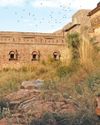
SIX SENSES FORT BARWARA RAJASTHAN
In the transformation of a historic 14th century fort-an erstwhile home of a Rajasthan royal family-into a luxury resort, native plants and indigenous materials play a pivotal role, redefining luxury with ecological sensitivity.
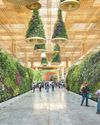
'A TERMINAL IN A GARDEN' PUTTING NATURE AND BIODIVERSITY AT THE HEART OF THE PASSENGER EXPERIENCE
The design of Terminal 2 (T2) at Kempegowda International Airport in Bengaluru is an attempt to provide a sensory and biophilic experience for passengers.
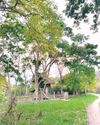
IDEAS OF 'SCENERY' AND 'LANDSCAPE' LINKING GEOGRAPHY WITH LANDSCAPE ARCHITECTURE
The term ‘landscape’ while encompassing natural and human elements, is understood differently among disciplines. Geographers, another set of experts working closely with nature, provide crucial ecological data, aiding landscape architects in creating sustainable designs.
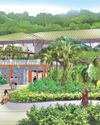
THRISSUR ZOOLOGICAL PARK KERALA
The relocated Zoo aims to showcase rich Western Ghats ecosystems, support nature conservation, and provide immersive visitor experience. The development integrates ecological restoration, architecture and landscape while improving livelihood opportunities of the local community.

ECOLOGY AND LOCAL CULTURE
With a working panel of scientists and experts from different fields of plant and animal ecology, the Nature Conservation Foundation is a Mysore-based NGO, engaged in exploring, understanding, and conserving the natural world through research and responsible engagement with society.
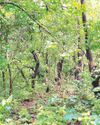
BEAUTY FOLLOWS COMPLEXITY
Designers must heed Sullivan's \"form follows function\" to avoid beauty over function. Following nature in landscape design enhances ecological productivity while promoting sustainability with principles of use of native species, biodiversity, and conservation of natural resources.